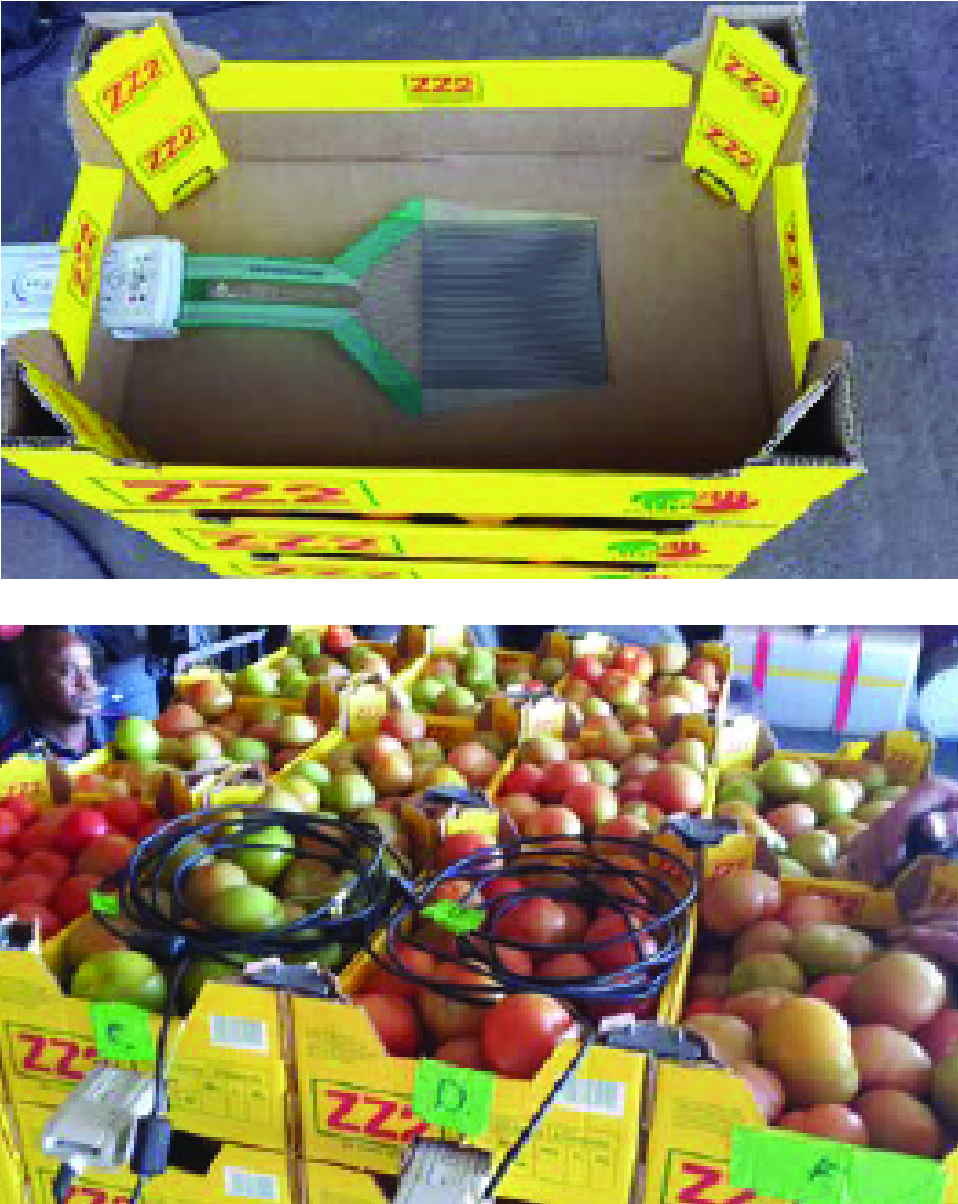One Sensitive Delivery: Pressure Mapping Helps Researchers Quantify the Journey Tomatoes Take to Market
Everyone follows their own strategy for selecting fresh produce. Most look at a fruit or vegetable’s color, shape, firmness, and weight, before adding to their cart. To some, the slightest bruise can be an indication that the product is no longer fresh. In many cases, produce may leave the farm or distribution facility in perfect freshness, but an excessively bumpy road to market may ruin their chances of getting picked before they even make it to the public.
Figure 1: Research team with the Department of Agricultural Engineering at the University of KwaZulu-Natal (image courtesy of the Post-Harvest Innovation Programme of South Africa).Food transportation can be especially difficult for underdeveloped nations, or regions with a poor or outdated transportation infrastructure. A clear method to assess in-transit shifts in pressure can help packaging or shipping container designers understand the impacts sensitive products endure, allowing them to develop better structures that maintain a more secure environment.
Recently, a group of researches with the University of Kwa-Zulu Natal (Department of Agricultural Engineering) in collaboration with the University of Pretoria (Department of Civil Engineering) (South Africa)1 set out to understand how transportation conditions can affect post-harvest losses of a fragile but very popular fresh produce item – tomatoes.
Tomatoes in South Africa are transported from farms, to pack houses, onto to markets, across a rural road network filled with potholes and other driving hazards. While post-harvest stresses are well documented (e.g., heat damage), the research group sought out to understand how damage incurred during transit could impact the shelf life of tomatoes.
 Figure 2: I-Scan systems used to quantify pressure exchanges within tomato transport bins (images courtesy of the Post-Harvest Innovation Programme of South Africa).
Figure 2: I-Scan systems used to quantify pressure exchanges within tomato transport bins (images courtesy of the Post-Harvest Innovation Programme of South Africa).
In one of their experiments, accelerometers paired with I-Scan™ pressure mapping systems (connected via wireless datalogger) were used to measure the pressure exchanges that tomatoes were exposed to while in transit. Harvested tomatoes at three maturity stages were transported over three supply roads in route to the produce market depot, each with very different driving conditions. The sensors were positioned between two handling conditions – cardboard bins (shown in figure 2) and plastic crates – to determine pressure exchanges while in transit.
The results showed in-transit pressures did have a noticeable effect on the shelf life of tomatoes. They also found that the samples transported in bins also appeared to ripen faster and had more structural damage than those transported in plastic crates. With this information, the researchers made recommendations to both large-scale and emerging farmers to improve their post-harvest operations, and also helped incentivize/support using certain transportation routes to provide the best chance for a fresh, top-quality product.
Click here to learn more about this experiment.
Capturing pressure data on the storing, stacking, and shipping of goods, represents just one example of how pressure mapping technology can uncover methods to improve production quality standards. This new eBook shares several other advanced manufacturing and production applications for pressure mapping technology.

